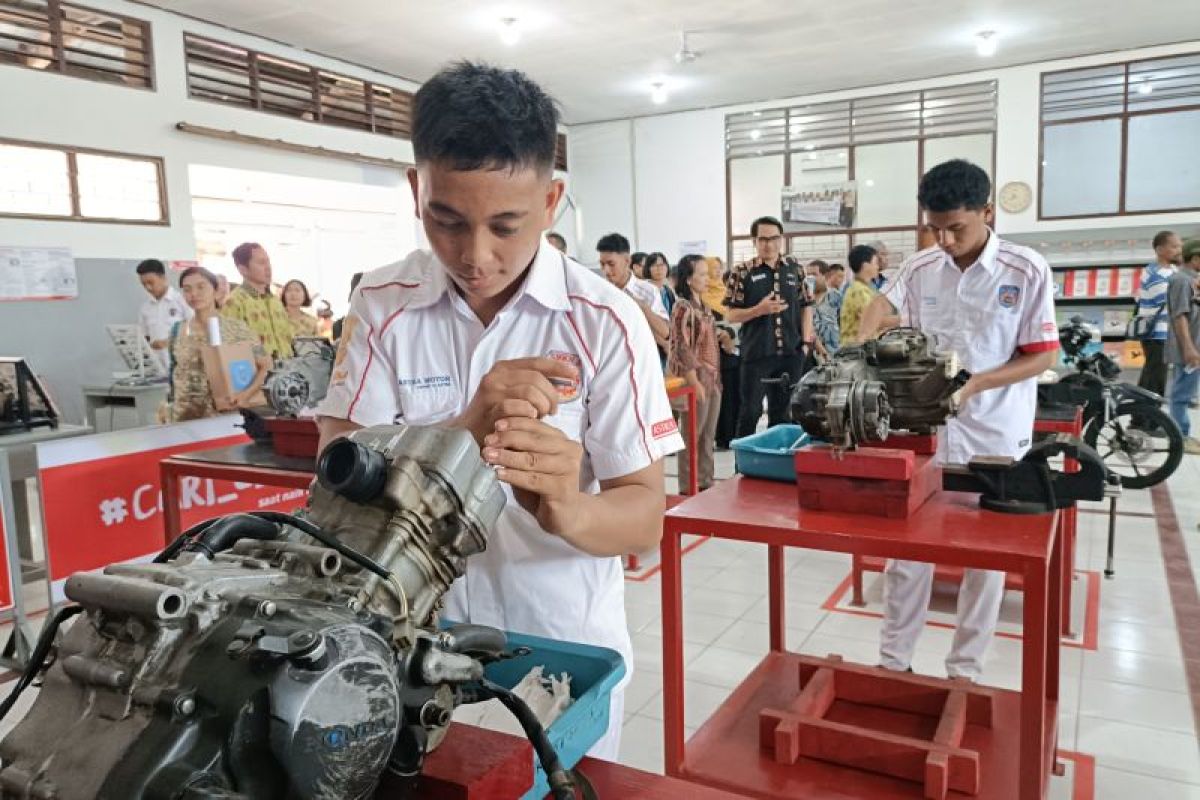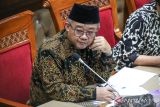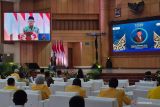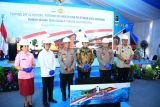Jakarta (ANTARA) - Statistics Indonesia (BPS) has estimated that Indonesia's demographic dividend will peak around 2020–2030, when the number of the working-age population will be twice the number of children and older adults.
A large working-age population would mean a higher number of workforce, business players, and potential consumers, who could play a role in accelerating national development.
Therefore, building a competitive and skilled workforce is necessary to reap the benefits of the demographic dividend. One way to achieve this is vocational education.
Vocational education covers educational programs that seek to create workers who can apply expertise and skills in their fields, are ready to work, and can compete globally.
During the first term of the 7th president Joko Widodo, vocational education was still facing several challenges. For one, the curriculum was not quite relevant to the developments in industries. Second, there was a lack of collaboration with businesses and industries.
In addition, there were limited facilities and competent teaching staff, as well as prevailing views that vocational education was meant for students with low academic achievement, which led to vocational high schools becoming a second choice for students.
As per BPS data from 2013, graduates of vocational high schools had the highest open unemployment rate of 9.88 percent compared to graduates from other educational institutions.
The low absorption of vocational high school graduates indicated that they did not meet the expectations of the world of work.
The government then determined that improving the quality of the workforce through vocational education was one of the keys to strengthening Indonesia’s competitiveness in the era of globalization.
Therefore, it introduced policies to support an improvement in the quality of vocational education.
In 2016, the Indonesian government issued Presidential Instruction Number 9 of 2016 on the Revitalization of Vocational High Schools.
It sought to improve the quality of Indonesian human resources by instructing the Ministry of Education, Culture, Research, and Technology to rebuild the vocational education and training system as well as reorient vocational education and training to make it demand-driven.
It also pushed the thorough revitalization of vocational high schools through the involvement of 11 ministries, governors, and the National Professional Certification Agency (BNSP).
So far, a number of efforts have been made to revitalize vocational high schools, namely improving the school curriculum to suit technological developments and the needs of businesses and industries, increasing the capacity of teachers through industry-based training, and strengthening cooperation with businesses and industries, both domestic and foreign.
The revitalization has involved the development of education programs based on competencies recognized by industries, such as professional certifications, as well as the updating of industrial cooperation programs, institutional management, and increasing access to competence certifications.
In 2017, as many as 125 vocational high schools were assigned areas of expertise, in keeping with national development priorities, namely maritime, tourism, agriculture (food security), arts and creative industries. Another 94 vocational high schools covered other areas of expertise that also supported national development priority programs.
The revitalization of vocational education seems to have generated results. The number of vocational high school graduates holding jobs increased from 12.37 million in February 2016 to 13.53 million in 2017, and then climbed to 14.54 million in 2018.
Furthermore, the open unemployment rate among vocational high school graduates also declined to 9.84 percent in February 2016. It then fell further to 9.27 percent in 2017 and 8.92 percent in 2018.
Second term
In the second term of Widodo’s presidency, vocational education received a boost with the establishment of the Directorate General of Vocational Education through Presidential Regulation Number 82 of 2019 concerning the Ministry of Education and Culture.
With the issuance of the regulation, all types of vocational education such as secondary level, higher education, courses, and training were brought under the scope of the Directorate General of Vocational Education. They were previously divided under different directorate generals.In 2022, the government issued Presidential Regulation Number 68 of 2022 concerning the Revitalization of Vocational Education and Vocational Training.
The then minister of education, culture, research, and technology, Nadiem Anwar Makarim, said that the revitalization of vocational education and vocational training was an effort to improve vocational education and make its implementation comprehensive, continuous, integrated, and coordinated.
The efforts made by the government to achieve this included increasing the specific advantages of vocational education and vocational training institutions; increasing access, quality, and relevance of vocational education and vocational training; as well as increasing labor force participation.
Baca juga: Govt empowering youths to solidify Indonesia's food sovereignty
As of mid-2024, the three focuses of vocational education, including vocational high schools, vocational universities, and training institutions, have started to generate results.
From 2020 to 2024, as many as 50 percent of vocational high school students have received excellent and relevant learning through close collaboration with 975 industries.
Meanwhile, 680 vocational high schools have implemented the Creative Product and Entrepreneurship Vocational High School program, 11,496 vocational high schools have developed teaching factories (Tefa), and 391 vocational high schools have obtained the status of regional public service agencies (BLUD).
At the higher education level, 725 industry partners have contributed a total of Rp279.12 billion (around US$17.8 million) in matching fund programs that encourage industries to be actively involved in the development of vocational universities' research.
Baca juga: Inclusive module devised for educational equity: Ministry
In addition, the Competitive Fund (CF) has helped 386 university departments to improve the competence of human resources and institutional capacity.
More than 850 thousand students have been provided opportunities to learn outside campus through the Independent Learning Independent Campus program.
Furthermore, a total of 28,269 students have participated in the Competency Certification program, 1,229 departments have implemented the "link and match" curriculum, 54 percent of courses have implemented project-based learning methods, 502 international recognitions have been obtained for research by lecturers and students, and 537 departments have implemented the downstreaming of research results and community service and internships.
Through the Work Skills Education (PKK) and Entrepreneurship Skills Education (PKW) programs, the Directorate General of Vocational Education has helped school-age children who do not go to school to be empowered and find work or become entrepreneurs.
The transformation efforts have started to show results, with the percentage of the working population against the trained workforce among vocational high school graduates increasing by 1.87 percent, diploma graduates by 1.08 percent, and among bachelor's, undergraduate, and postgraduate graduates by 0.05 percent in the 2020–2023 period.
Apart from that, partnerships in the vocational education ecosystem have also increased.
As per records, 746 new partnerships have been forged through the Partnership Ecosystem program, 8,223 collaborations have been made with businesses and industries, 1,655 businesses and industries have been involved in vocational education collaborations, and 255 certification schemes have been rolled out in 124 expertise fields.
Despite the change in government, vocational education must continue to receive attention as it has a big role in creating skilled and competitive human resources.









